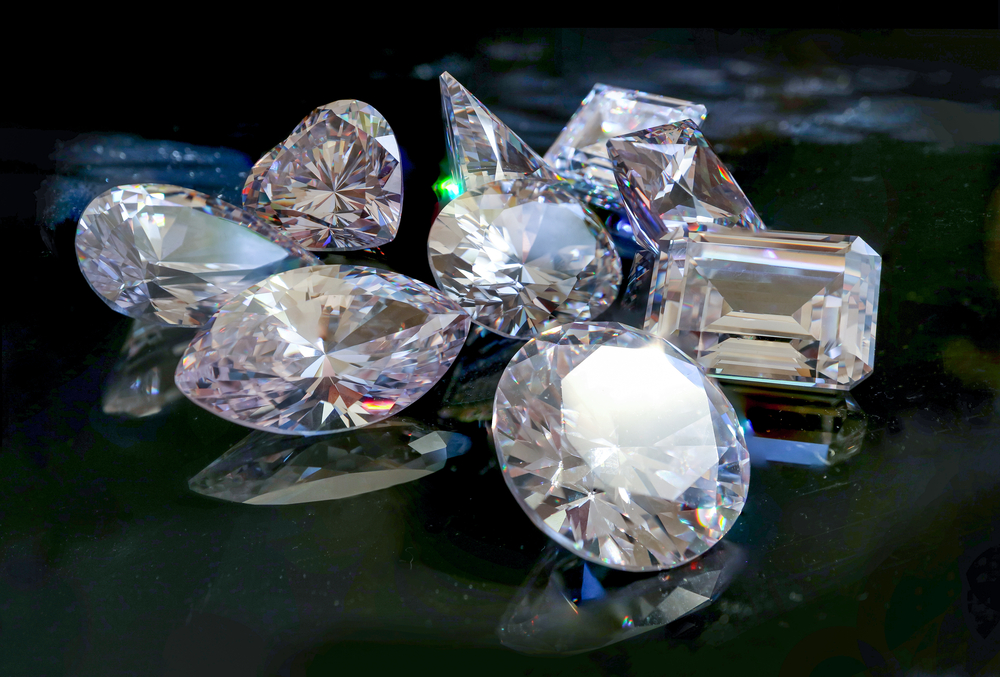
In the world of modern jewelry, there has been a growing shift toward sustainability and responsible sourcing. Two terms that are frequently mentioned in this context are “ethical diamonds” and “man-made diamonds.” While both offer alternatives to traditional mined diamonds, they are distinct in their origins and the ethical considerations behind their creation. This article explores the differences between ethical diamonds and man-made diamonds, their environmental impact, and why they have become popular choices for conscious consumers.
What Are Ethical Diamonds?
Ethical diamonds are diamonds that are sourced and produced with minimal harm to the environment and society. The primary characteristic that defines an ethical diamond is that it is mined or created under conditions that promote environmental sustainability and human rights. These diamonds are typically certified by organizations like the Kimberley Process Certification Scheme, which ensures that they do not come from conflict zones where violence or exploitation occurs. Ethical diamonds focus on transparency and traceability, ensuring that the entire supply chain adheres to ethical practices.
The ethical diamond market has gained traction due to consumer awareness of issues such as child labor, unfair wages, and environmental degradation that can occur during traditional diamond mining. Many people now want to make sure their purchase has a positive impact on the world, making ethical diamonds an increasingly popular option.
Man-Made Diamonds: An Innovative Alternative
Man-made diamonds, also known as synthetic or lab-grown diamonds, are diamonds that are created in a laboratory setting rather than being mined from the Earth. These diamonds are created using two main methods: High Pressure High Temperature (HPHT) and Chemical Vapor Deposition (CVD). Both methods mimic the natural conditions that diamonds undergo in the Earth’s crust, resulting in a stone that is chemically, physically, and optically identical to mined diamonds.
One of the most significant advantages of man-made diamonds is that they do not contribute to the environmental degradation associated with traditional diamond mining. These diamonds are often considered a more sustainable and ethical option because they do not require the large-scale mining operations that can destroy ecosystems and pollute surrounding areas. As a result, many consumers view man made diamonds as an ethical choice that aligns with their values.
Environmental Impact: Ethical Diamonds vs. Man-Made Diamonds
When comparing ethical diamonds and man-made diamonds, environmental sustainability is a key consideration. Ethical diamonds, while sourced responsibly, still require mining, which can have significant environmental consequences. Mining for diamonds often involves digging deep into the Earth, which can result in deforestation, soil erosion, and the destruction of natural habitats. Additionally, diamond mining consumes large amounts of water and energy, contributing to the depletion of natural resources.
On the other hand, man-made diamonds generally have a smaller environmental footprint. The creation of lab-grown diamonds uses significantly less land and water compared to traditional mining. Although energy consumption can vary depending on the production method, many lab-grown diamond companies are transitioning to renewable energy sources to power their operations. As a result, man-made diamonds are often seen as a more eco-friendly option, offering an alternative that minimizes harm to the planet.
The Ethical Considerations Behind Man-Made Diamonds
Man-made diamonds are also considered ethical because they do not involve exploitation of workers or communities in the same way that some diamond mines may. In certain mining operations, workers, including children, may be subjected to dangerous working conditions, low wages, and poor treatment. By choosing man-made diamonds, consumers can avoid supporting industries with such practices. Furthermore, the transparency of the lab-grown diamond industry allows consumers to trace the origins of their diamonds, providing additional assurance that they are making an ethical choice.
Additionally, man-made diamonds do not contribute to the so-called “blood diamond” trade, where diamonds are mined in conflict zones and sold to fund violence and war. By opting for man-made diamonds, consumers can be confident that their jewelry is free from associations with violence and human rights abuses.
Cost Comparison: Ethical Diamonds and Man-Made Diamonds
Cost is another factor that differentiates ethical diamonds from man-made diamonds. Ethical diamonds, due to their sourcing process and the costs associated with ensuring that they are mined sustainably and responsibly, can often be more expensive than their traditional counterparts. The added cost comes from the certifications, ethical labor practices, and responsible mining practices involved in obtaining the stone.
Man-made diamonds, however, tend to be more affordable than both ethical and traditionally mined diamonds. The production process for lab-grown diamonds is more controlled and requires less labor and resources compared to mining, which helps reduce the cost. For consumers seeking an ethical option but on a budget, man-made diamonds present an accessible choice without compromising on quality or appearance.
Consumer Demand for Ethical Jewelry
The growing demand for both ethical diamonds and man-made diamonds reflects a larger trend toward conscious consumerism. More individuals are making purchasing decisions based on ethical, environmental, and social considerations. This shift is part of a broader movement toward more sustainable and socially responsible consumer practices.
As consumers become more aware of the impact of their purchases, both ethical diamonds and man-made diamonds have found a place in the market. Many consumers are choosing to invest in diamonds that align with their values, whether through responsible mining practices or more sustainable and ethically produced alternatives like lab-grown diamonds.
Conclusion: A Bright Future for Ethical and Man-Made Diamonds
Both ethical diamonds and man-made diamonds are contributing to the transformation of the jewelry industry. Ethical diamonds offer a more responsible alternative to traditional mining, while man-made diamonds provide a sustainable, eco-friendly, and cost-effective choice for conscious consumers. As the demand for ethical jewelry continues to rise, both options are likely to play an important role in shaping the future of the diamond industry.
Ultimately, whether you choose ethical diamonds or man-made diamonds, you are making a purchase that reflects a growing awareness of the need for environmental sustainability and ethical responsibility in the jewelry market. Both options provide an opportunity to wear beautiful, high-quality diamonds while supporting practices that respect both people and the planet.





